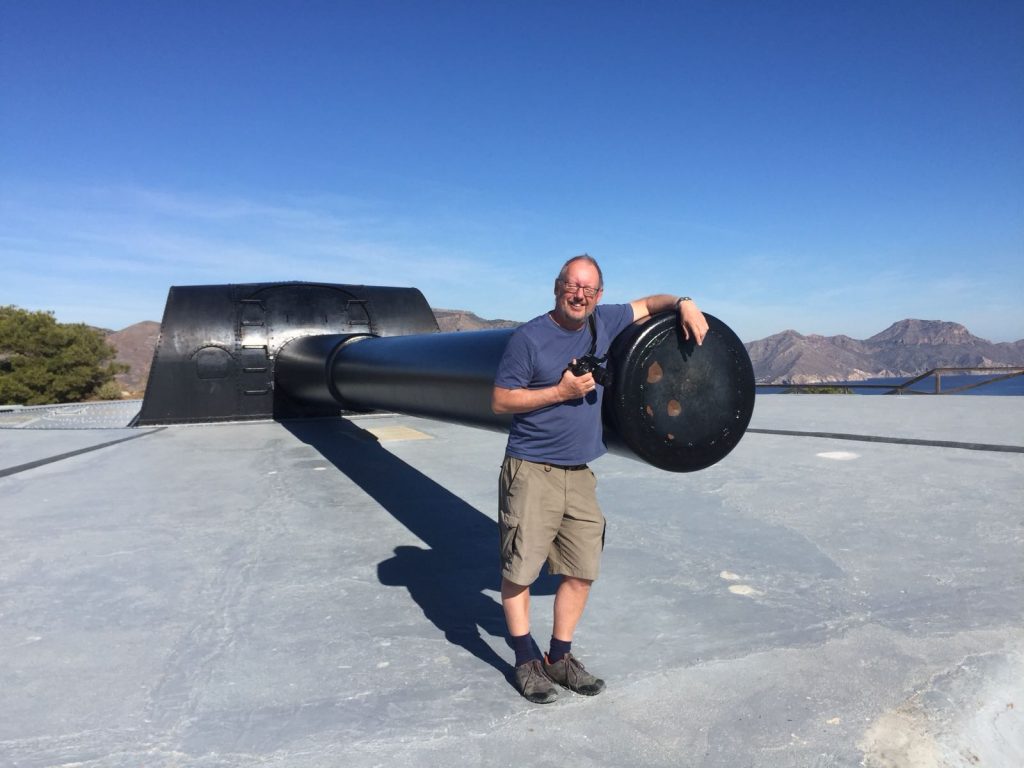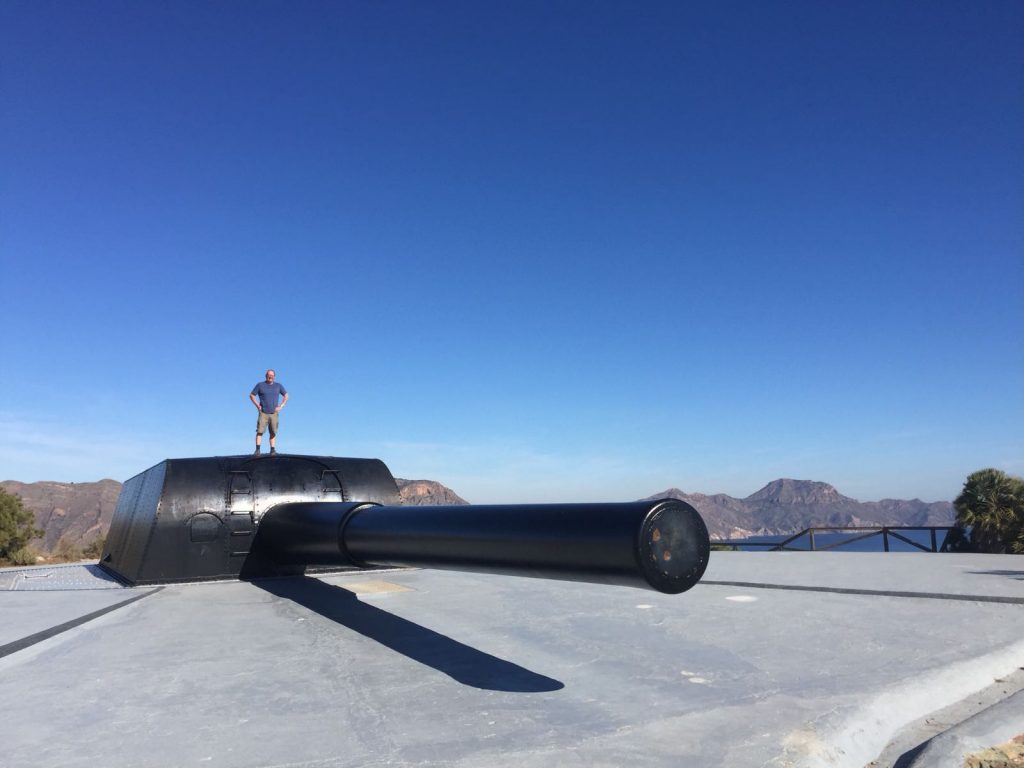Home on Wheels – Motorhome Blog
Have you got the nerve to drive up a steep narrow mountain road in your motorhome to the incredible guns of Mazarron? We did!
It’s early February and the UK is in the grip of “the coldest week of the year” yet here in Spain we have been sitting outside and the sun is very warm. Just like back in the UK, Spain is actually having a cold snap! Parts of inland Spain have seen a lot of snow and many roads have been gridlocked with vehicles struggling to cope with the winter weather. The only snow we have seen though is on the peaks of the nearby Sierra Nevada and in fact we can see, from where we are staying, mainland Spain’s highest peak, Mulhacen, standing at 3478 metres above sea level.
A few days at Almerimar marina
So far, our journey through France and Spain is proving to be as good as we had hoped. Missing the British winter is certainly a bonus, but we are on this trip to see the best of what Europe has to offer in terms of scenery and culture and also to enjoy the pleasure of not having to get up for work every day. Having worked for over 40 years it’s nice to be able to wake up when it gets light in the morning and enjoy amazing views. As I write this blog our motorhome is parked up at the marina at a small place called Almerimar. On one side there is the marina and on the other side there is a huge beach and the snow capped mountains of the Sierra Nevada in the distance. It’s an amazing view and we feel lucky that we can wake up to this and also witness some incredible sunsets.
We have continued our journey south along the Spanish coast and visited some very interesting places as well as some places I have never heard of. Touring, especially in a motorhome, enables you to stop pretty much anywhere you want when you see somewhere interesting but we also do quite a bit of research to find places that look like they are worth a visit.
A motorhome stop at Cartagena
The next stop on our journey took us to the port city and naval base of Cartagena in the Murcia region of south eastern Spain. Cartagena was founded around 220 BC and the city has many Roman ruins including two Roman amphitheatres and Roman Forum. We parked up our motorhome at the Los Dolores campsite about 4 miles from the city centre and close to the number 7 bus that runs frequently to and from the city centre.
The campsite showers and toilets were a bit basic but the owner was friendly and spoke good English. One other negative point about the campsite is that you have to walk along a narrow busy road to get to the bus stop. As we were walking to the bus stop we were walking past a large house and an aggressive dog ran out and gave Anne a small bite on the leg. We should have reported it but the thought of trying to explain what happened when we don’t speak Spanish was not an appealing prospect so we decided to leave it. The risk of rabies from a domestic dog is minimal. However, for the next few days I kept watch over Anne to see if I could see any more frothing than normal at the mouth but all was well!
Apart from Roman ruins Cartagena has one of the deepest natural harbours in the world and the harbour area is worth a visit, with several bars and restaurants to visit if you feel the need. For us though the best place we visited was actually just down the coast from Cartegena.
The incredible Guns of Mazarron
The Guns of Mazarron are a hidden gem. Built in the late 1920’s as part of a huge defence network to protect the naval base at Cartegena the huge guns are built on a rocky cliff top 218 metres above the sea.
The guns of Mazarron were made by Vickers in the UK and had a 35km firing range. You can drive to the big guns up a narrow mountain road. Anne was very nervous about taking our 7m motorhome up this mountain road but I said it wouldn’t be a problem, even though I had no real idea what the road would be like! Luckily, we didn’t meet any oncoming traffic but if we had it would have been shall we say interesting, especially if the vehicle was any bigger than a Fiat 500 because there were very few passing places. The road was 7km long, very steep, narrow, windy and with sheer drops at the sides. Anne found it a bit of a white-knuckle ride. Worth it, though!! If you have the nerve to drive a motorhome up a steep narrow road to the guns of Mazarron then you won’t regret it!

After we managed to navigate down the mountain road from the Mazarron guns we found a busy motorhome parking area at a pretty fishing village on the Costa Calida called La Azohia. I’m not sure if this parking was authorised but it is featured on my Camper Contact app and the parking was free so we parked up, on sloping ground, and had amazing views of the beach and sea only feet away from us. We heard rumours the next day that the village mayor had decided to stop motorhomes parking here and that everyone would be moved on but we were only staying one night so we don’t know whether that happened.
Wild camping nightmare
So called “wild camping” is not something we are experts on. I prefer to call it free camping because quite often it’s not “wild” as I would describe it. Motorhomes can often be found parked on streets close to camp sites or camper stops. Is it because the official campsite is full? People have different views on whether this acceptable or not. I’m not sure how the local residents feel about motorhomes parking overnight outside their homes. I’m not sure I’d like it. On the other hand, we spent a free night alongside many others in a car park near a harbour, not disturbing anyone and that felt OK. I suppose you have to decide if your intended overnight spot feels acceptable or not, taking into account consideration of others.
We are continuing our motorhome journey south and heading for Mojacar and the natural park at Cabo de Gata.
